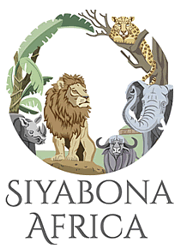Vegetation and Geography of Kruger National Park Regions
To understand the wildlife diversity of Kruger Park, it is essential to be familiar with the impact that differing geologies have on creating differing vegetation types, which in turn dictate what species will be abundant in any given region of Kruger Park.
Kruger Park Ecology by Region
 While Stevenson-Hamilton believed in 'a balance of Nature', evidence suggests that the natural environment is never in a constant state of e...more
While Stevenson-Hamilton believed in 'a balance of Nature', evidence suggests that the natural environment is never in a constant state of e...moreKruger Park Eco-system, Wildlife and Vegetation
 The park is generally flat to gently undulating, with average height of 260 metres (853 feet) above sea level, with its most mountainous are...more
The park is generally flat to gently undulating, with average height of 260 metres (853 feet) above sea level, with its most mountainous are...moreHistory and Geography of Kruger National Park
 The Big Five Game Reserve known as the Kruger National Park is South Africa's largest and second oldest safari park, spanning over 19 455 km...more
The Big Five Game Reserve known as the Kruger National Park is South Africa's largest and second oldest safari park, spanning over 19 455 km...moreImages of a Great African Park. The Central Region - Game Filled Savannas
 The sweet grasses that grow on fertile soils formed on shale and volcanic basalt, and an abundance of excellent browsing trees, sustain the ...more
The sweet grasses that grow on fertile soils formed on shale and volcanic basalt, and an abundance of excellent browsing trees, sustain the ...moreKruger Park Game Drives by Region
 Handy self-drive traveller's guide to Kruger Park Game Drives by Region including game viewing self-drive routes to Olifants and Letaba...more
Handy self-drive traveller's guide to Kruger Park Game Drives by Region including game viewing self-drive routes to Olifants and Letaba...moreThe Far North - Rare Birds and Sand Forest
 This region embraces several fascinating ecozones that differ markedly from habitats elsewhere in the Park. A total of 15 distinct plant com...more
This region embraces several fascinating ecozones that differ markedly from habitats elsewhere in the Park. A total of 15 distinct plant com...moreImages of a Great African Park. The Southern Region
 Kruger's historic Southern Region is bordered by the Crocodile River in the south and the Sabie River in the north. In the east, along the b...more
Kruger's historic Southern Region is bordered by the Crocodile River in the south and the Sabie River in the north. In the east, along the b...moreImages of a Great African Park. Northern Region
 A low-lying, sun-baked plain ranging in elevation from 300 to 450 metres, the Northern Region extends north of the Olifants River. This semi...more
A low-lying, sun-baked plain ranging in elevation from 300 to 450 metres, the Northern Region extends north of the Olifants River. This semi...more
